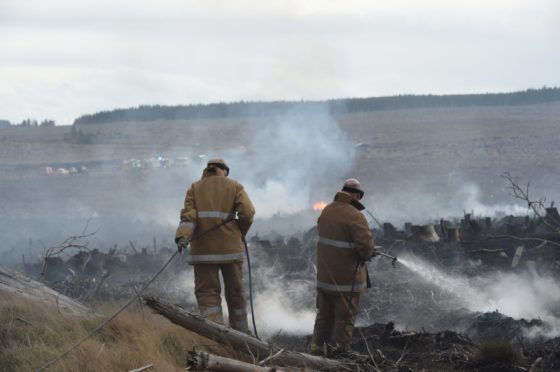Fire chiefs have warned of an “extreme” risk of wildfires across the north, north-east and west of Scotland over the coming days.
The caution, issued in conjunction with the Scottish Wildfire Forum (SWF), will last until Saturday, April 17.
A map released by the Scottish Fire And Rescue Service (SFRS) has highlighted parts of Orkney and Shetland, and large swathes of the western coast, as at “extreme” risk of wildfires by the end of the week.
Wildfire warning: a very high – extreme risk of wildfire is in place across North-East, East and Central Scotland until 17th April.
An extreme risk of wildfire is also in place across Western Scotland from 15th – 17th April.
More details here: https://t.co/hAuN6MyLh9 pic.twitter.com/inpchQ5if6— Scottish Fire and Rescue Service (@fire_scot) April 13, 2021
Almost the entire remainder of the north and north-east have been categorised at least “very high” for Saturday.
The fire service has warned that any wildfires which break out have the potential to burn “for days” – devastating “vast areas” of land and wildlife.
If they spread further, they can also threaten nearby communities.
Members of the public have been urged to take “extreme caution” and “think twice” before using anything involving a naked flame outdoors.
Local Senior Officer Bruce Farquharson said: “Many rural and remote communities are hugely impacted by wildfires, which can cause significant damage.
“Livestock, farmland, wildlife, protected woodland and sites of special scientific interest can all be devastated by these fires – as can the lives of people living and working in rural communities.
“These fires can also have a hugely negative impact on the environment and the release of greenhouse gas emissions into the atmosphere.
“Human behaviour can significantly lower the chance of a wildfire starting, so it is crucial that people act safely and responsibly in rural environments, and always follow the Scottish Outdoor Access Code.”
